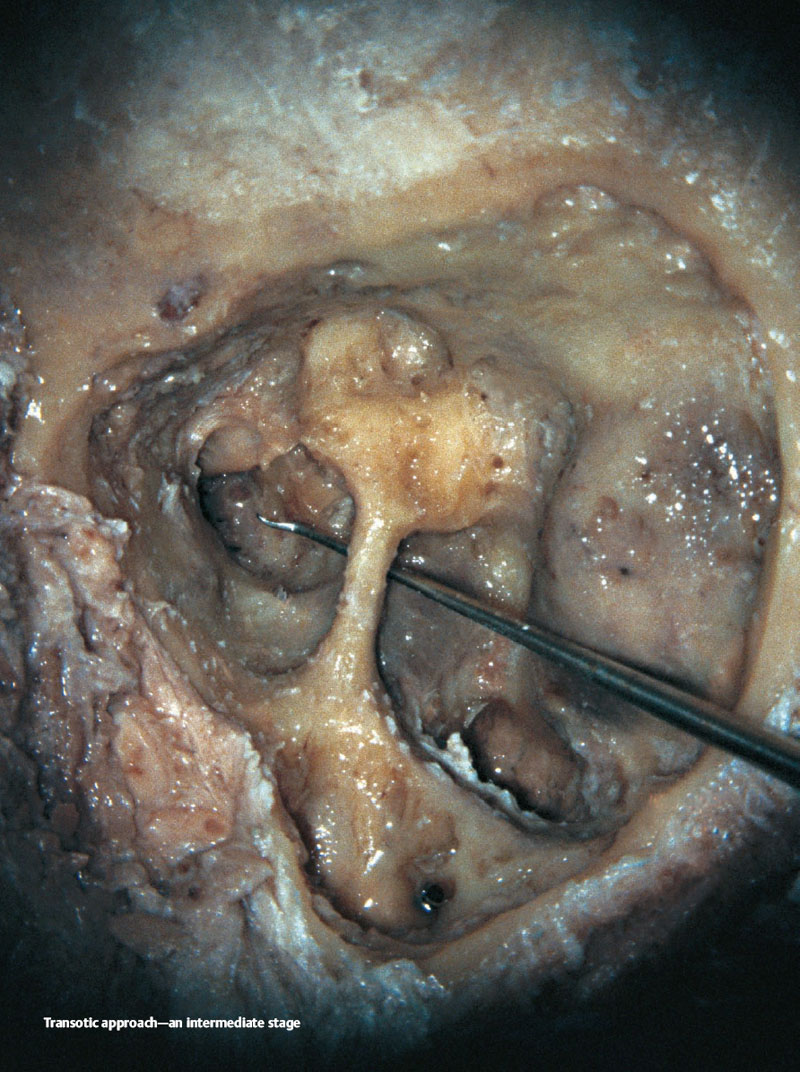29 Transotic Approach Following a subtotal petrosectomy, extirpation of the entire labyrinth, including the cochlea, leaving the tympanic and mastoid segments of the facial nerve covered with a thin shell of bone as a bridge in the cavity. This allows extensive exposure of the internal auditory canal, and the cerebellopontine angle through the posterior cranial fossa. At the end of this approach, abdominal fat is put into the cavity and a “blind sac” closure of the external auditory canal is carried out. The main indication of this technique is in acoustic neuroma surgery where the hearing is not of concern. However, it may also be carried out for different neurotologic procedures. The procedure will be performed on the temporal bone where a subtotal petrosectomy has already been carried out. Superiorly the middle cranial fossa dural plate; posteriorly the sigmoid sinus dural plate; inferiorly the digastic ridge and mastoid tip, have all been exposed. Anteriorly, the reflection of the temporomandibular joint can be observed. DR: Digastric ridge MCF: Middle cranial fossa (dural plate) MT: Mastoid tip SS: Sigmoid sinus (dural plate) TMP: Temporomandibular joint periosteum (plate) ZR: Zygomatic root Additionally, the inferior wall of the tympanic bone has been extensively drilled where only a thin bone covering the jugular bulb remained. In the center of the cavity, the solid bone of the facial canal and of the labyrinth is observed. The forthcoming stages are specific to the transotic approach. CP: Cochleariform process HSC: Horizontal semicircular canal JB: Jugular bulb (plate) MFN: Mastoid facial nerve PSC: Posterior semicircular canal SSC: Superior semicircular canal TTM: Tensor tympani muscle First, the area posteromedial to the facial canal is drilled by means of a small burr. This area comprises of the junction of the sigmoid sinus and jugular bulb. The sigmoid sinus makes an “S” form here. The surgeon should be aware of this anatomy and of its bearing; thus preventing damage to the sigmoid sinus. II: 2–3mm cutting and diamond burrs MIL: Blue discoloration of bone (Junction) Definitions and Tips C: Cochlea ET: Eustachian tube JB: Jugular bulb (plate) RW: Round window S: Stapes SS: Sigmoid sinus (dural plate) In the next stage, the bone covering the mastoid segment of the facial canal is thinned by drilling with a small diamond burr. Care is taken not to expose any part of the facial nerve. II: 2–3mm diamond burr MIL: Reflection of the facial nerve Using the same diamond burr, the bone covering the region medial to the facial canal, i.e., lateral to the junction of the sigmoid sinus and jugular bulb, is drilled away. In this way, a tunnel is created in this area medial to the mastoid segment of the facial nerve. II: 2–3mm diamond burr MIL: Jugular bulb and facial nerve Definitions and Tips The next stage is extirpation of the semicircular canals. According to the main principle of temporal bone surgery, they should not be drilled away in haste. Therefore; each semicircular canal is drilled separately, in search of its own lumen. II: 3–4mm cutting burr MIL: Solid bone of semicircular canals In this way, the lumens of the semicircular canals have been entirely exposed. It is extremely important to drill carefully, to prevent damage to the facial nerve during this and the following steps. The exposed semicircular canal lumens have been indicated in the figure. C: Cochlea CC: Common crus HSC: Horizontal semicircular canal PSC: Posterior semicircular canal SSC: Superior semicircular canal TTM: Tensor tympani muscle Definitions and Tips II: 3–4mm cutting burr MIL: Facial nerve Drilling of the bone at the center of the posterior labyrinth continues by following the posterior and horizontal semicircular canal lumens toward the vestibule. The ampulla of the superior semicircular canal is preserved for use as a landmark in the subsequent steps of the procedure. II: 3–4mm cutting burr MIL: Semicircular canal ampullae AHSC: Ampulla of horizontal semicircular canal APSC: Ampulla of posterior semicircular canal ASSC: Ampulla of superior semicircular canal CHSC: Crus of horizontal semicircular canal
Definition
Indications
Anatomical Orientation
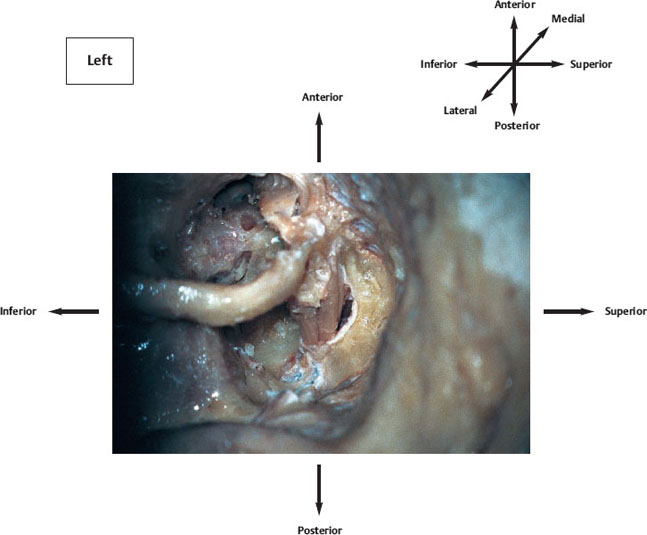
Surgical Steps
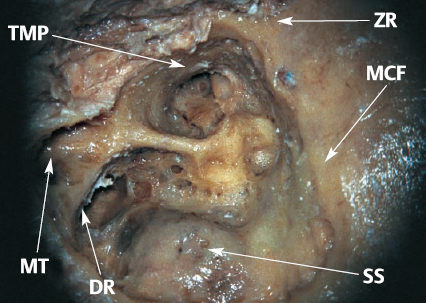
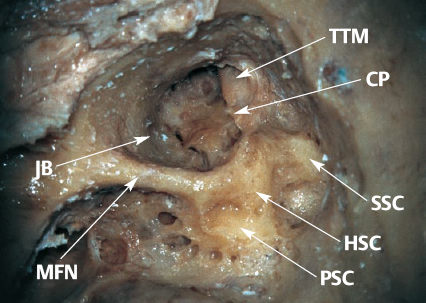
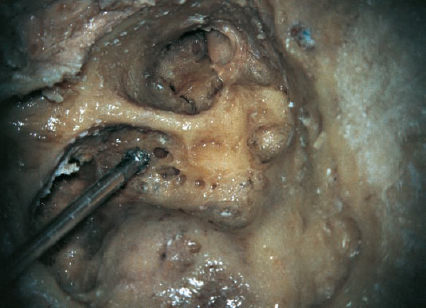
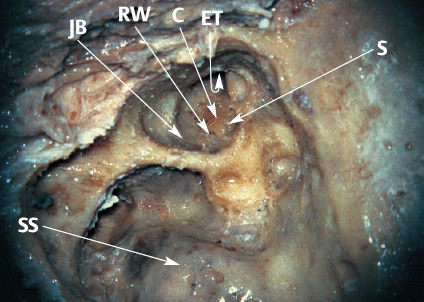
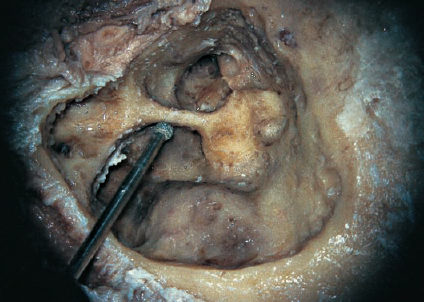

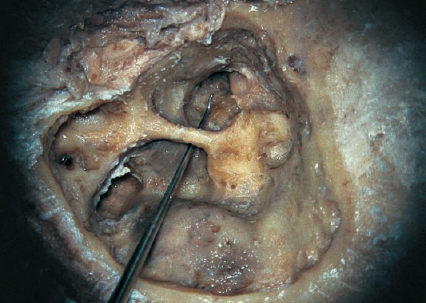
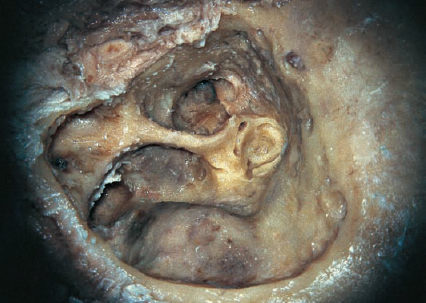
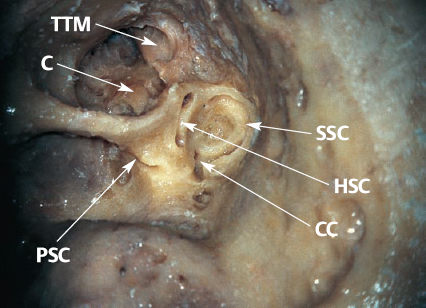
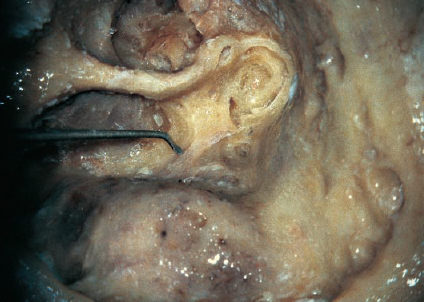
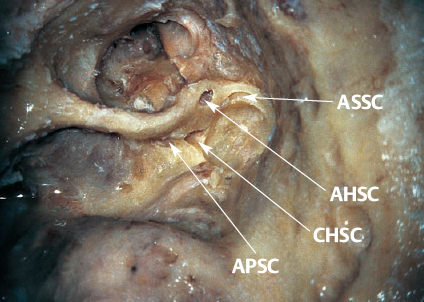
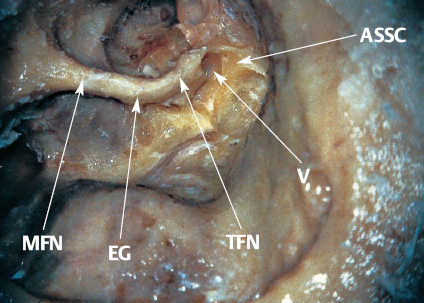
Transotic Approach
Only gold members can continue reading. Log In or Register to continue

Full access? Get Clinical Tree


